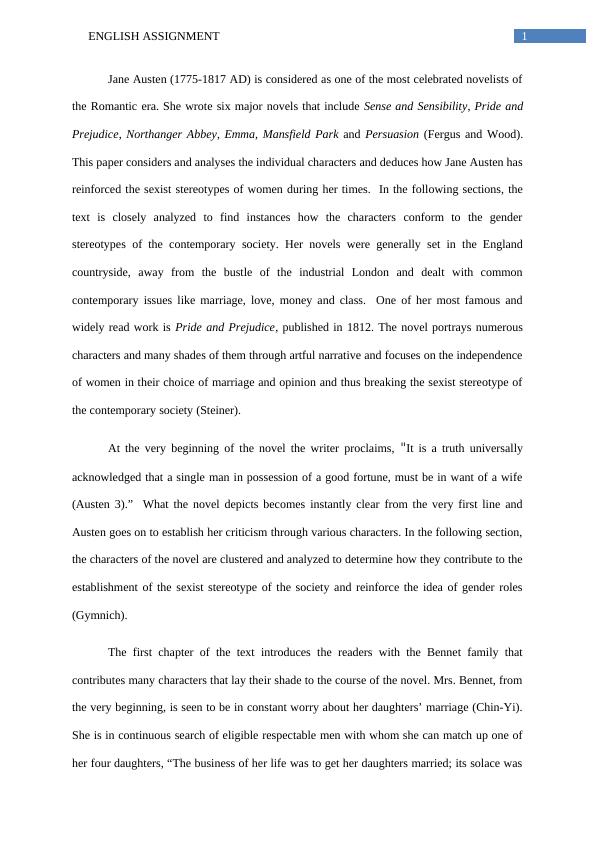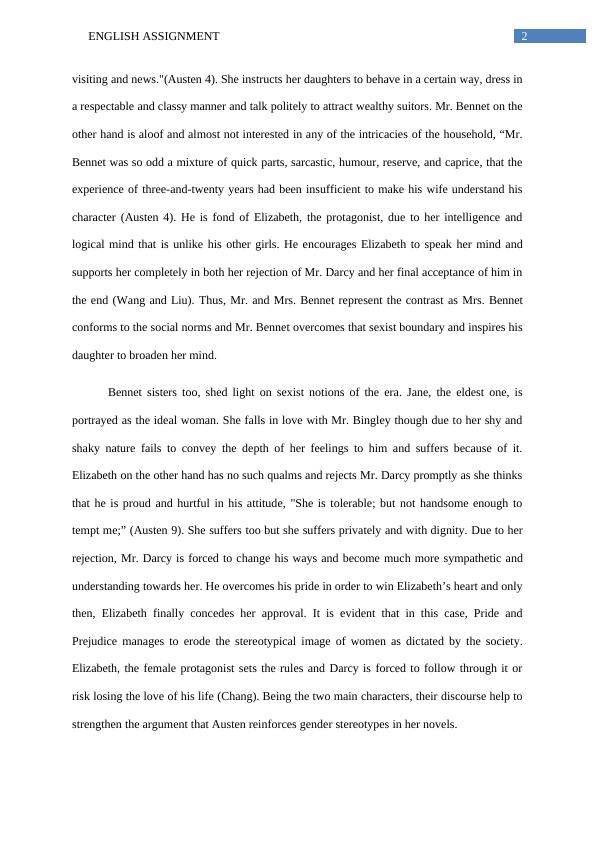Reinforcement of Sexist Stereotypes in Jane Austen's Pride and Prejudice
A book review on Pride and Prejudice by Van Ghent, D.
7 Pages1558 Words46 Views
Added on 2023-01-23
About This Document
This paper analyzes how Jane Austen reinforces sexist stereotypes of women in her novel Pride and Prejudice. It examines the characters and their adherence to gender roles, as well as the breaking of these stereotypes by the main characters. The analysis highlights Austen's portrayal of gender equality and challenges societal norms.
Reinforcement of Sexist Stereotypes in Jane Austen's Pride and Prejudice
A book review on Pride and Prejudice by Van Ghent, D.
Added on 2023-01-23
ShareRelated Documents
End of preview
Want to access all the pages? Upload your documents or become a member.
Feminism in Jane Austen's Pride and Prejudice
|5
|1290
|273
Book Analysis of Pride and Prejudice
|9
|2149
|62
Letters in Pride and Prejudice
|5
|1400
|71
Pride and Prejudice | Novel
|6
|1279
|46
The Attitude Towards Marriage and Money in Pride and Prejudice
|10
|2867
|406
ENGLISH LITERATURE AND COMPOSITION
|6
|1307
|16



